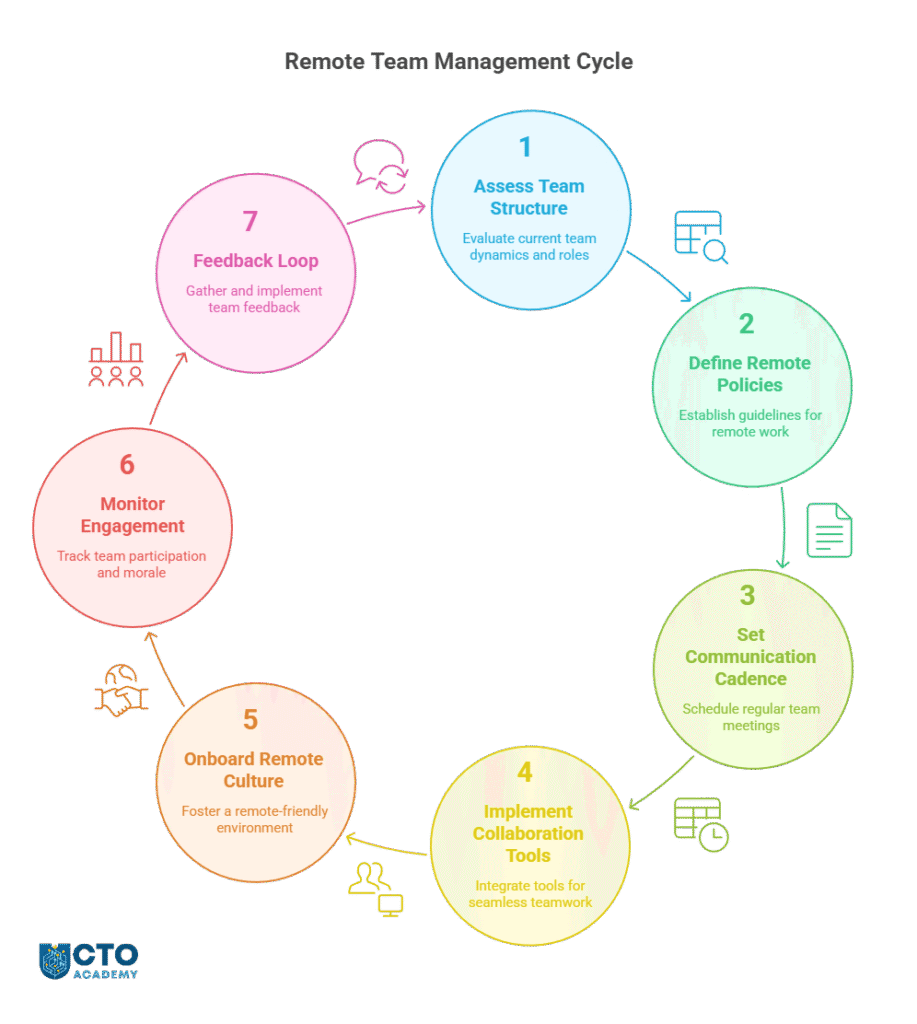Whenever they must manage distributed teams, technology leaders face the dual challenge. The first is driving outcomes. The second is nurturing a coherent, connected culture. This playbook offers a step-by-step guide to building resilient remote engineering teams equipped to thrive across time zones and communication barriers.

Start with a situational audit:
Establish policies that align with your business objectives and team diversity. Include:
Regular touchpoints are essential. This is what you should do:
Select and integrate a tech stack for seamless collaboration. Essentials include:
TIP: Automation can bridge tool silos.
Onboarding should instill values, not just workflows. Therefore, introduce peer mentoring, asynchronous onboarding journeys, and culture-building rituals like virtual coffee hours to embed a shared ethos.
With intentional leadership and robust systems, remote engineering teams can exceed the impact of colocated peers. Remember, resilience emerges not from tools but from trust, clarity, and shared purpose.
90 Things You Need To Know To Become an Effective CTO
